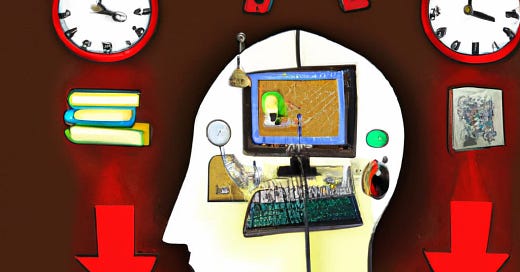Why I am encouraging my policy students to use ChatGPT for their final papers
This is a summary of talks I gave my students at San Jose State University (Public Policy) and the University of San Francisco (Policy Analysis and Implementation). Both courses culminate in a final paper that is a significant portion of the final grade. For both classes, I am encouraging students to use ChatGPT, BingChat or some other AI/LLM tool in paper preparation.
I let the class get completely quiet before what I thought would blow their minds: “I want you to use Chat GPT for your final papers.”
The response was not quite as surprised as I expected. Several had puzzled looks.
“How many know what I am talking about?,” I asked, just to be sure we were on the same page. Two hands went up.
“The world of public policy is a world of words,” I explained.
A friend who has worked in Congress and the White House likes to say that people like us are “saving the world one memo at a time” — and that is not far off. In Washington and Sacramento and in departments and bureaus and agencies and offices and courtrooms all over this country, policy gets made by arguments and analysis that are conveyed in writing.
Those who can read quickly, process thoroughly, and write clearly possess a superpower. They can discern nuance, make arguments convincingly — and they advance quickly. In the job market, the right cover letter can almost always land the interview. In Congress and other policy circles, a tight one-pager is the key to getting a message across. Good writing is an important door into the world of power. And up until a few months ago, it was an impossible barrier to entry for many. Thanks to new large language model (LLM) tools, that barrier to entry can now be overcome. Especially for students with English as a second language or who struggle with organizing their thoughts, the assistance of these LLMs —not just in school but also in life—may open doors that would otherwise be closed. I believe that helping students learn how to use them responsibly—especially the importance of additional fact-checking and independent research—is important for preparing them for the world they will soon enter.
That is why I am encouraging students to use these new tools in developing their final papers. As I explained to them, “I do not want to be the math teacher who sends you out into the world with no idea how to use a calculator.”
I gave a demo of how to use ChatGPT to produce an outline (nearly every jaw dropped as chatGPT generated a near-perfect outline of the background, legislative history, and structure of the Section 8 Housing Assistance program). I explained that these tools are often wrong and that every assertion or fact included in the paper must be backed up with independent research linked in a footnote. I also told students that the expectation for writing style, organization, grammar, punctuation and other basic structural elements will now be “near-perfection.” There is no longer any excuse for poor writing. I am requiring students to list and submit the tools and prompts they use in a separate document.
YOU ARE ENCOURAGED to use AI/LLM tools to develop the paper. If you do use these tools, you should acknowledge that in a footnote to the title. These tools will often provide incorrect or incomplete information. That is why you must do independent research of ANY facts, assertions or arguments in your paper and include a footnote to a trusted source. You also should keep track of your prompt history and turn that in with your paper. (This will be a separate document and will not be included in your page count.)
I explained to the class that these tools are being rapidly integrated into the real-world practice of law and public policy. I recently attended “Future Law” at Stanford to hear innovators in legal technology discuss how these LLMs are being incorporated into the legal field. In April my organization co-hosted an event with congressional staffers in DC to discuss how many are incorporating new AI tools into their day-to-day work. This summer, I will speak to a gathering in Germany on “AI for Parliaments” to discuss how new tools can streamline legislative drafting and ultimately be incorporated into government program implementation and oversight.
These new uses and possibilities will present significant challenges and raise important questions. But one thing that is not in question is *whether* they will become an important element of public policy in practice. They will — at an ever-increasing rate. And that is why this semester at San Jose State University (“Silicon Valley’s public university”) and the University of San Francisco’s school of Public Administration, new AI tools are now part of the public policy curriculum — in my class, at least.

